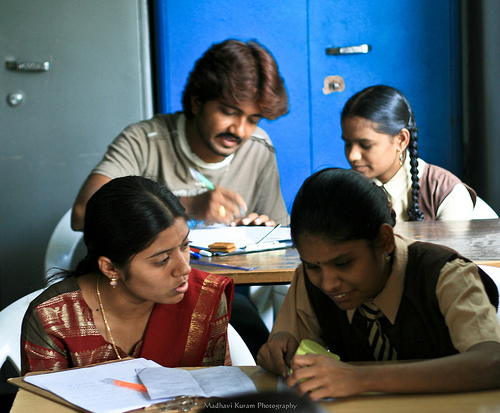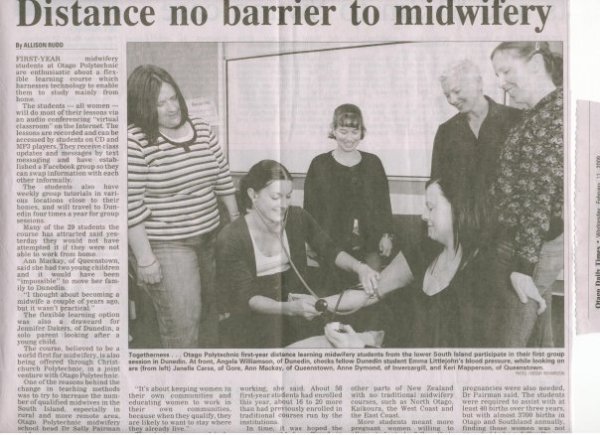On the 12th April I was fortunate to be able to attend the first EdTech4Export conference in Wellington New Zealand. This post is my reflection on the conference, thank to Otago Polytechnic for sending me.
To get me in the mood the taxi driver from the airport had national radio on and they were discussing 3D printers. This whole concept is happening now and is so revolutionary. It seems that we are not in the middle of a technological revolution at all but we are just at the start of it. There is so much more just around the corner and we, in New Zealand, need to be prepared and ready to take advantage of this.
Following are the key points I took from speakers I heard at the conference. Note that the best quote is in my own words and may not be the actual words that were said at the time, but were what I had scribbled down.
Keynote
Karen Billings, Vice President, Education Division, Software and Information Industry Association (SIIS) U.S.
Key message for me
There is growing interest in personalised learning. However there is also interest in mass media, mobile, global blended and MOOCs (massive open online courses)
Best quote
“Learning is mobile and global.”
What I learned
Innovative Ed Tech solution could help to address the issues of; Disengaged students; Unrealistic expectations; Diversity; Unemployment.
We need to lessen dropout rate; Improve communication and collaboration (with mobile devices) More out of class learning (virtual tours etc); support education reform; Technology however will never replace instructors. Real human interaction will always be needed.
More
Ed Tech opportunities in the U.S. exist in: Multiplatform aggregation/ Professional development/ Data analysis and integration (identifying students with problems)
Keynote
Carl Engkvist, Senior Vice President of Business Development Asia Pacific, Pearson (involved in the development of Blackboard)
Best quote
“Think global- Act local”
“China wants to modernise, not westernise.” It has a long proud history in education, predating our own
What I learned
Asia needs more education than can be provided locally.
75% use mobile devices (smartphones and tablets) to go online, not desktop or laptop.
One week every year Singapore has an Elearning week, all schools, colleges and universities close and all learning is at home. This is pandemic planning.
When entering the Asian market need t long term view and work to that vision, adapt product to local needs.
More
Mobile learning is the way to go.
Keynote:
Tim Brooke-Hunt, Controller of Children’s programming, ABC TV
Key message for me
Linear television will not be around in the future. Television needs to be aware of what is happening with print media, it needs to adapt as it is going in the same direction.
What I learned
Very young children are using touch screen technology to learn, as young as 2 years of age. ABC is doing incredible things for education in Australia. They have developed wonderful resources to support teaching and engage children.
Breakout sessions
Breakout 1
Stephen Knightly; Chair, New Zealand Game Developers Association
Key message for me
Games engage learners and provide great learning experiences if the pedagogy is aligned.
Best quote
Analyse everything and develop content accordingly.
What I learned
Games are effective pedagogically. They need to be enjoyable and challenging, they provide experiential learning experiences.
Identify Clear goals – use the right tools – provide challenges – give feedback
Do not let students stay stuck on a level. If they do not achieve, offer hints or tips.
The learning needs to be made apparent. Students need to know what they are looking for in the game. Play game, stop, reflect, learn.
More
Maru Nihoniho (Metia Interactive) http://www.tepapa.govt.nz/WhatsOn/allevents/Pages/13AprilMoveoverBoys.aspx
Maru developed a game Sparx which has been found to help teenagers deal with depression as effectively as having counselling sessions. This has been published in the British Medical Journal http://www.bmj.com/content/344/bmj.e2598
Breakout 2 first speaker
Rachel Bolstad; New Zealand Council for Education Research. http://www.nzcer.org.nz/research/rachel-bolstad
Key message for me
Lifelong learning changes the way we need to teach
Best quote
Knowledge is not a noun it is a verb. Knowledge is a tool to help us learn how to learn.
What I learned
Personalise learning – built around the learner
Work with diversity – diversity is strength. Plurality valued and students engaged.
Use Knowledge to develop learning capacity – collaboration and connectedness
Rethinking learner and teacher roles – building learner capacity, building curriculum
Continuous learning for teachers and education leaders
Partnerships between schools and community.
Breakout 2 second speaker
Garry Faloon; University of Waikato
Key message
Researched 5 year olds use of touch screen games for problem solving and learning.
Best quote
The best apps model good teacher practice.
What I learned
Rewards should be appropriate. Smaller achievements should get smaller rewards and completion should gain a larger award. Giving big rewards frequently reduces the effectiveness.
Formative feedback is important. Where students have tried and failed come in and ask “have you tried this?”
Breakout 3
Nick Billowes, Director of Development, Core Education
Best quote
It is not
Key message for me
Technology is a transforming agent in education.
Best quote
It is not about doing old things in new ways but doing new things in new ways.
Andreas Düesner. Senior research scientist. HITLab.(Human Interface Technology.)
Key message for me
Increasing costs of education means we need to be more efficient, effective and ecological.
Best quote
It is not about doing old things in new ways but doing new things in new ways.
What I learned
Asia is our market
More
Ubiquity:
Learning in the 21st Century is any time, any place, any pace and with or through any device
Agency:
Learner controlled, learner choice. Empowerment to act. Personalization. Lifelong learning. Universal design.
Connectedness:
High level collaboration. Rethink concepts such as ownership. How knowledge is controlled and how it can be shared
Conclusion
David Copeland, from Learning Media was MC for the day. He was very skilled at keeping things to time and identifying the underlying threads from speakers. He really made the day fun. It was great to get together and have the opportunity to chat with people interested in using technology in education. I was amazed at the number of people who had great ideas and some great products that they were developing and looking for investors to take their ideas further or looking for a market for their products. If I had one criticism of the conference it would be that there were so many there looking for these things but not so many investors or markets represented to take their ideas further.
It was really interesting to hear what these people had been doing and developing. Some wonderful educational gaming activities being developed by many, one I spoke with was Dan Milward from Gamfroot, something I will need to explore. I also spoke with Stephen Clarke and his sister, from pixelBook, who can create wonderful Ebooks with any content.
It was great to catch up with John Enlow from ADINSTRUMENTS. This is a company who already provide software packages to Otago Polytechnic and I will be talking more with them about how there software may be used in our midwifery blended learning programme.


 Image:
Image: 
 delivery format. I have not been blogging much because I have been so busy working on this but I now need to record what I have been up to for the last few weeks. So to bring you up to speed on what this is all about here is a brief outline of the programme.
delivery format. I have not been blogging much because I have been so busy working on this but I now need to record what I have been up to for the last few weeks. So to bring you up to speed on what this is all about here is a brief outline of the programme.

